Scientific evidence available on the transmission of SARS-CoV-2, the virus that has caused the global outbreak of COVID-19, shows that the disease spreads through droplets launched from an infected person via coughing, sneezing, talking that land on a healthy person in close proximity (less than 6 feet). Epidemiological researchers have found social distancing measures to be very effective in containing the spread of virus in the absence of a proven cure or vaccine. The research described here is an attempt to measure statistical significance of such non pharmaceutical interventions and how adherence to stay at home orders affects the COVID-19 epidemic growth rate.
We partnered with Facebook Data for Good and analysed Facebook’s user location data to study the population behaviour of India, and particularly Tamil Nadu, during the COVID-19 lockdown. We believe that making people compliant to lockdown is the only way to lower the infection rate. So, we monitored the population movement and studied the behavioural patterns.
Data Sources
We receive data from two primary sources: Facebook and covid19india. Facebook’s mobility data represents people who use Facebook in this region and have location services enabled. Data is aggregated at varying levels of spatial resolution and vectors (lines) are drawn connecting all areas that share substantial levels of mobility. Facebook data is not for public use - admins from Facebook provides access to selected members after signing the Data Usage Agreement.
covid19india is a volunteer-driven database for COVID-19 stats & patient tracing in India. This group of volunteers are using state bulletins and official handles to update daily COVID data. The data is validated by a group of volunteers and published into a Google sheet and an API. API is available for all at api.covid19india.org.
Overall reduction in mobility
Data collection for Tamil Nadu (TN) was started by Facebook only on April 6, 2020. Hence, we had to use the national level mobility data for analysis before April 6, 1010. In order to see the extent of effects lockdown has on general mobility, we mapped the traffic in and out TN on three specific days - March 21, 2020 (baseline) and March 30, 2020 (Lockdown stage) (Figure 1). We can see that the mobility has been reduced drastically from March 21 to March 30. Numerically, we found that the mobility has reduced around 60% after the first stage of lockdown was imposed.
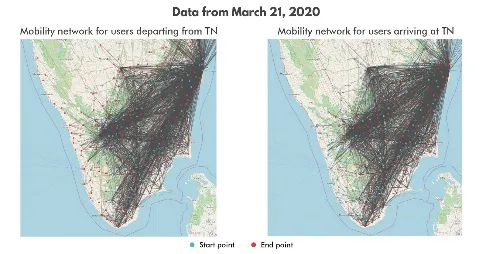
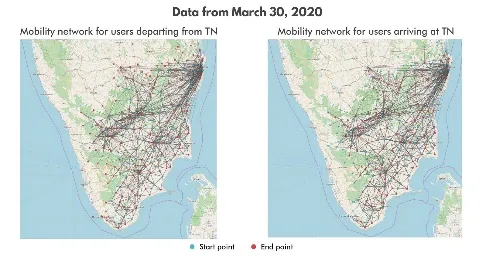
Figure 1: Maps showing traffic in and out of TN on two specific days before and after lockdown. We can see that there exists a high amount of traffic between Chennai, Coimbatore and Madurai. [1]
Correlation between mobility and COVID-19 cases
We tried to incorporate the incubation time difference of Sars-COV-2 virus (2 weeks) into the correlation of mobility and infection rate. We observed mobility till two weeks ago and compared it with the number of cases at present. The pattern between highly mobile regions and COVID hotspots are very similar (Figure 2). This suggests that the regions with high mobility at present have the potential to turn into hot spots for the disease outbreak. Koyambedu and Royapuram topped in both mobility and number of reported cases. This shows that mobility of a region is correlated with the infection spread in that region.
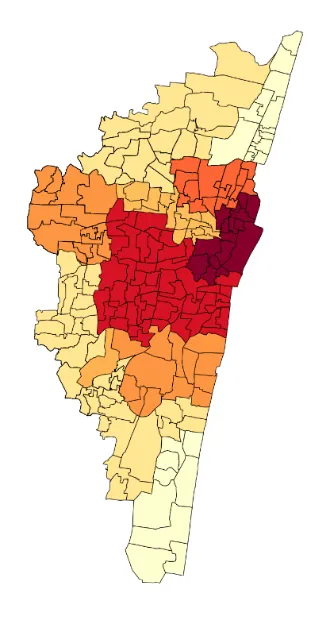
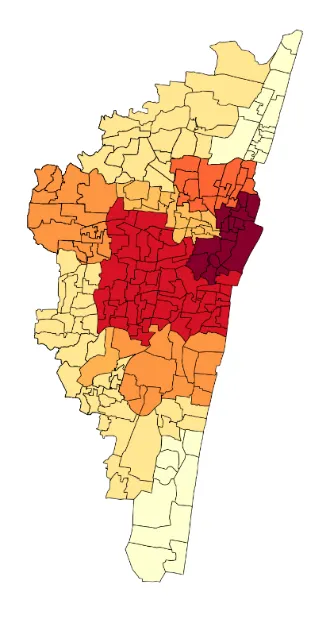

Figure 2: Comparison of average zonal-wise mobility in Chennai (left) and the average COVID cases two weeks (right) after the recorded mobility. The same areas with high mobility are the areas with highest number of COVID-19 cases. [1]
Progression of mobility changes in Tamil Nadu
One of the metrics Facebook offers with its mobility data is ‘percent_change’ which tells us the percentage change in movement between tiles compared to the previous day. We plotted the percent_change metric for each district in TN for every day since April 22 (Figure 3). Each trend in Figure 3 corresponds to the average percentage change in mobility on each day.
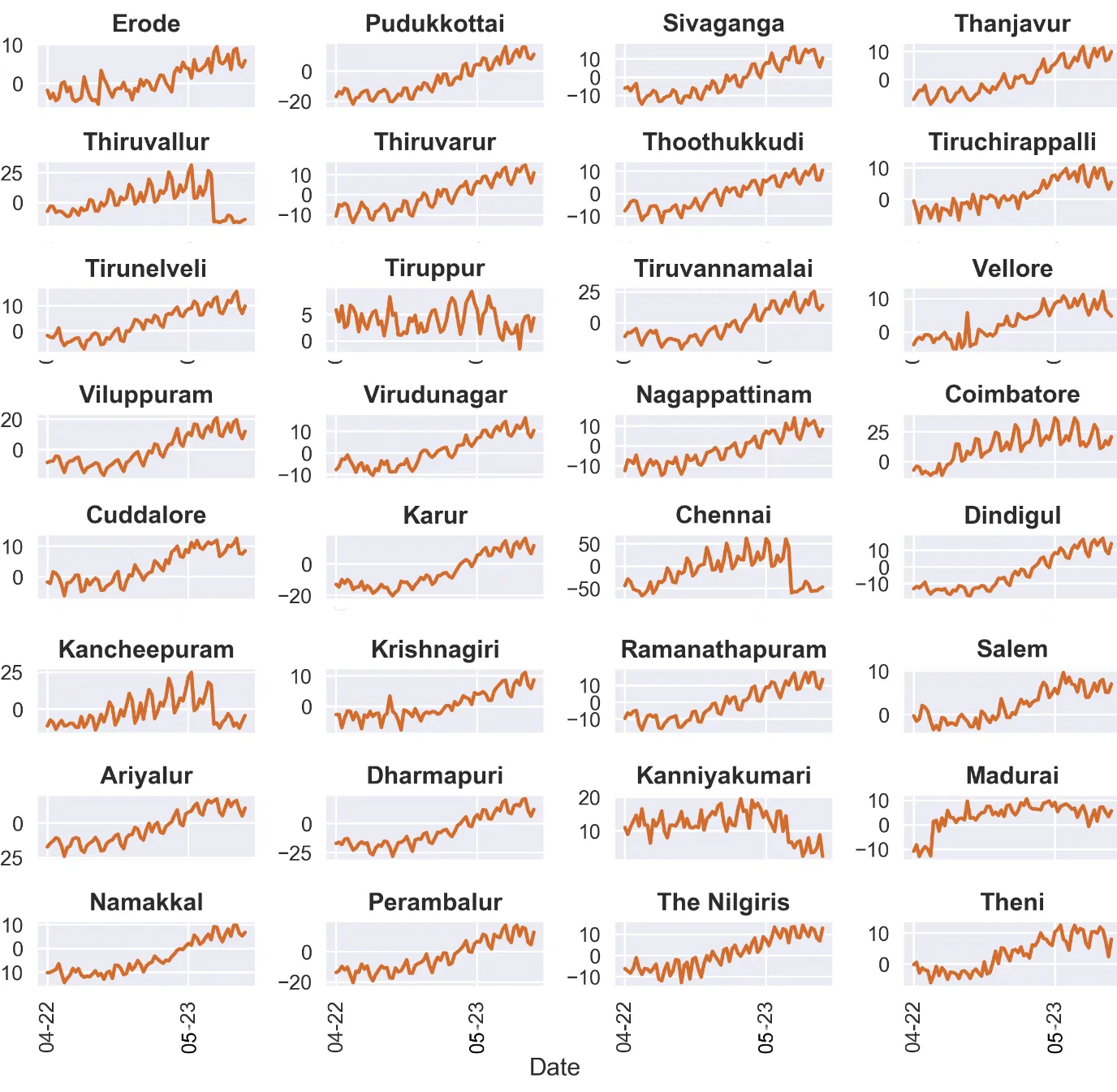
Figure 3: Percentage change in movement for each district in TN from April 22 to June 30. [1]
The trendlines in Figure 3 show a universal increase on slope. This tells us that the daily movement is increasing day-by-day and the compliance to lockdown measures are dropping. Apart from that, we can also observe periodic jumps and falls in the trend. These abrupt changes fall during the weekends, suggesting that the movement during weekends vastly differ from that of during weekdays. And interestingly, we are seeing such kinds of changes for every week without exceptions.
Chennai, Kancheepuram, Thiruvallur and Coimbatore, the most affected districts by the pandemic, experience a huge increase in movement during weekends, as opposed to most of other districts which face minor changes in movement. One possible reason might be that people in those cities do bulk shopping during weekends in order to sustain themselves for the upcoming week. This might be a potential situation that causes these fluctuations in those cities. Whereas, the trends that other districts show, where the mobility is high during weekdays and low during weekends is actually how the general population moves on a normal day. Hence, we suggest that the districts showing less movement on weekends are closer to normalcy than to a region under lockdown, i.e., the compliance to lockdown is comparatively low.
Conclusion
Our mobility studies showed that mobility in Tamil Nadu has been increasing with each subsequent stage of lockdown. Northern and western districts in TN showed higher compliance to lockdown measures than its central and southern counterparts. Chennai is the most affected district and Chennai’s reported cases account for 65% of total cases in TN whereas the population of Chennai is only 10% of TN’s total population. This is due to the fact that Chennai is the economic center of Tamil Nadu and lowering the mobility is harder compared to other districts.
Recently, more and more relaxations were imposed on lockdown and the mobility has been creeping up to normal. This also resulted in increase in COVID-19 cases in Tamil Nadu. The cases proportion of Chennai to Tamil Nadu decreased from 65% to 40% in July 2020 but these cases were compensated by increase of proportion in other districts of Tamil Nadu, particularly Madurai, Tirunelveli and Coimbatore. The compliance to lockdown has been greatly reduced in Tamil Nadu which played a vital role in the increase in cases. We have been compiling these studies and inferences as situation reports and sharing them with the public health officials of Tamil Nadu. Our studies were also featured in national newspapers and television media.
As the vaccines for COVID-19 are informed to be ready for public distribution, people are looking forward to vaccination for curbing the infection spread than resorting to following lockdown measures. New Zealand and Taiwan has shown the world that following the lockdown protocol, wearing masks and adhere to physical distancing can eradicate the virus spread. SARS-CoV-2 has an alarmingly high infection rate and it is important to adopt every measure required to lower the infection spread.
Contributors:
Senthamizhan V , Jahnvi Patel, Siddharth Nishtala, Yogesh Tripathi, Vinit Mehta, Himanshu Sinha, Karthik Raman, Balaraman RavindranMedia coverage:
1. Increased mobility in Tamil Nadu in lockdown 3.0, says IIT study
2. Lockdown compliance in Chennai least in Tamil Nadu: IIT study
Keywords
COVID-19, Data analysis, Population behaviour, Lockdown, Mobility network